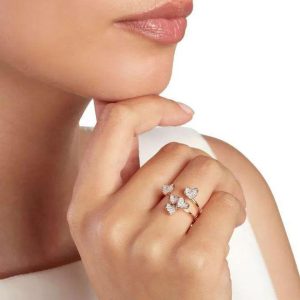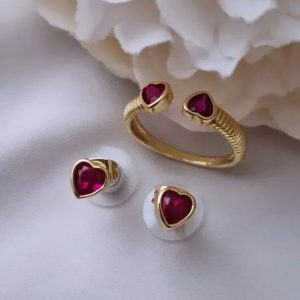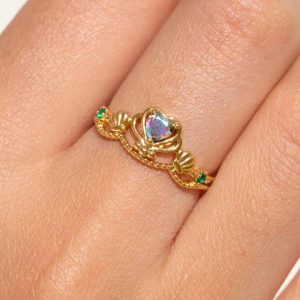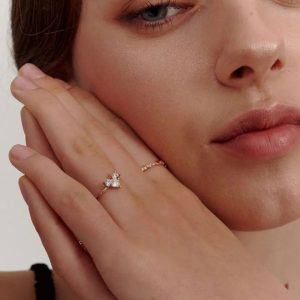A total of 2473 characters, expected to take 7 minutes to complete reading.
For 2025 Spring and Summer, designers are combining a futuristic sense of geometric structure with the organic aesthetics of natural elements in inlaid ring designs. They are also emphasizing sustainable concepts and emotional expression.
According to McKinsey’s 2024 jewelry industry report, geometric design has grown significantly in North American and European markets. This is because consumers aged 25-35 prefer its “sense of technology and modern art.” Meanwhile, enamel craftsmanship has become the first choice for young consumers; 58% of Generation Z choose it due to its highly recognizable colors. Consequently, it saw continued sales growth of 14% from 2023 to 2024. Female consumers recognized mother-of-pearl for its “elegant temperament”—73% of them did. Similarly, the millennial generation’s pursuit of natural materials made turquoise more popular, with a 52% preference. Collectively, these trends have promoted a balanced expression of rational structure and emotional nature in jewelry design.
Geometric structure
Geometric structures predominantly use circles, cubes, facets, and polygons. Designers deconstruct and reorganize these elements through techniques like cutting, stacking, and rotation. This forms three-dimensional or asymmetrical shapes. The combination of minimalist metal lines and dense inlays reflects the design’s depth in simplicity. For instance, Louis Vuitton showcases simple lines and diamond-inlaid geometric patterns. Likewise, Animale creates dynamic beauty by arranging diamonds of different sizes. The splitting, twisting, and dislocation of geometric shapes have become core techniques. These weaken the symmetry of traditional jewelry and emphasize the avant-garde sense of design, as seen in ICHJEN’s cut gemstone shapes.
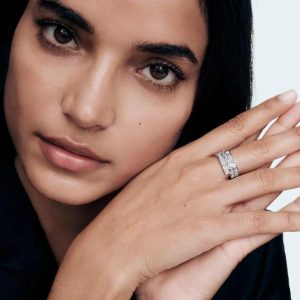
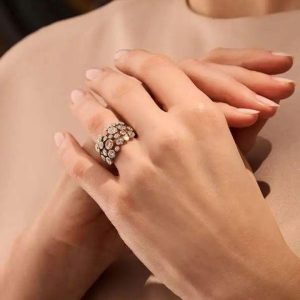
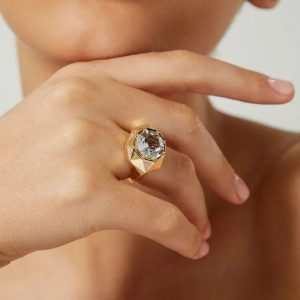
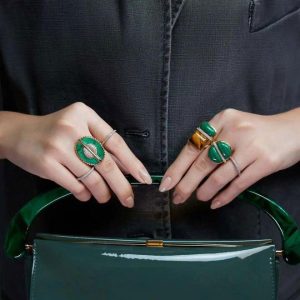
Natural flowers
Designers create abstract flower outlines and geometric petal structures. They base these on single or multi-layer petals. They match a center stone—such as a diamond, ruby, or emerald—with small diamonds around the petals. This forms a gradient or radial arrangement. Simple rings feature complex petal inlays, for example, with Carrera y Carrera. Designers simplify petal shapes into geometric lines or single clusters of small flowers, like those from Meadowlark. This emphasizes the design’s lightness and simplicity.
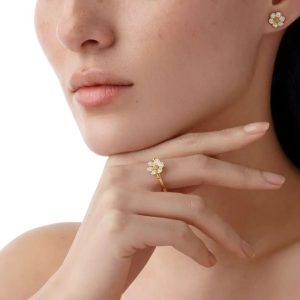
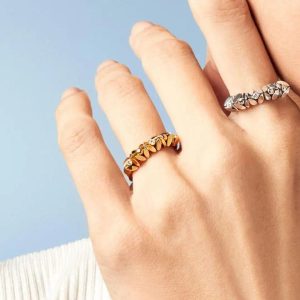
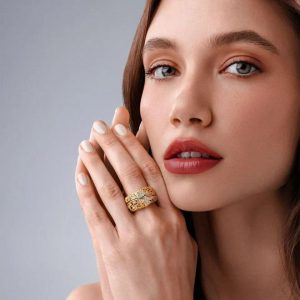
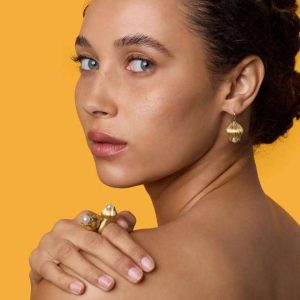
Heart shape
You’ll see heart-shaped gems in the ring. These include heart-shaped main stones, hollow heart-shaped structures, or symmetrical heart patterns. Alternatively, designers imply the heart-shaped outline through the arrangement of gems or metal lines. This creates complex patterns with multiple gems. They use heart-shaped gems, rubies, and diamonds as visual focal points. They surround the main stone or decorate the ring with broken diamonds and small colored gems. They employ dense inlay or micro-inlay techniques to enhance the sense of layering.
